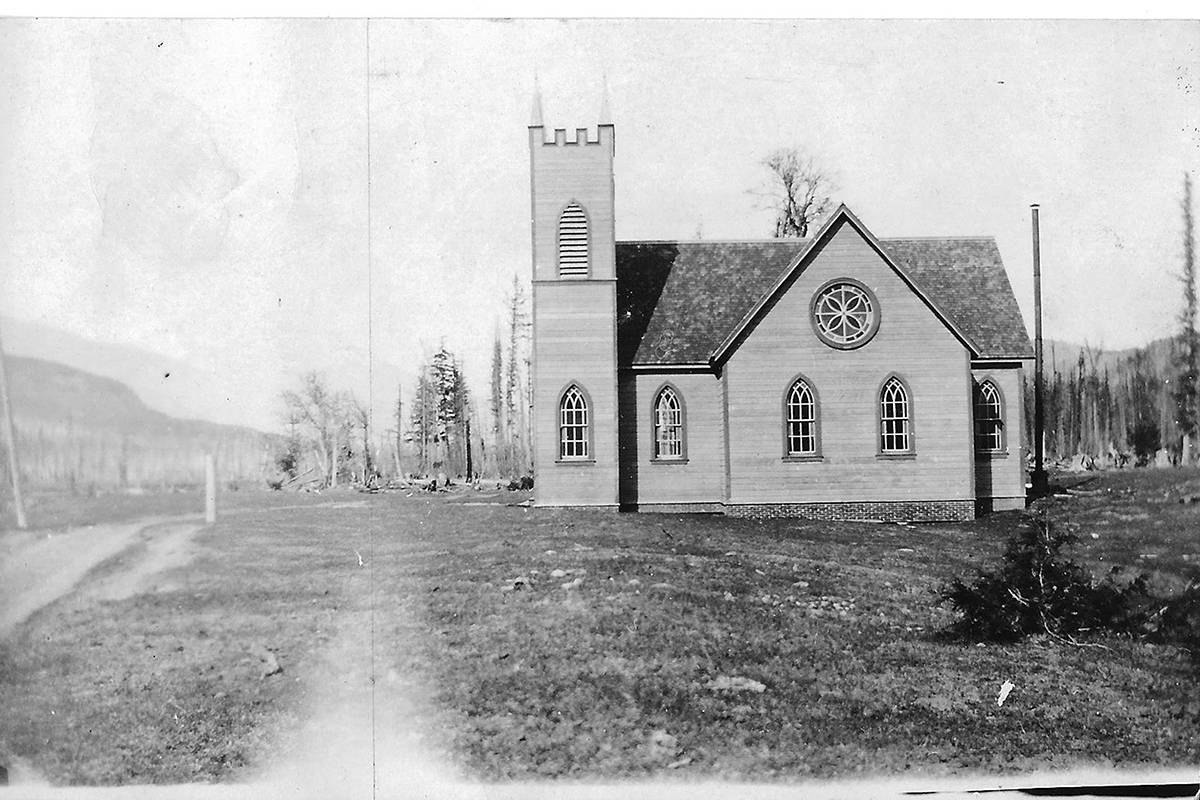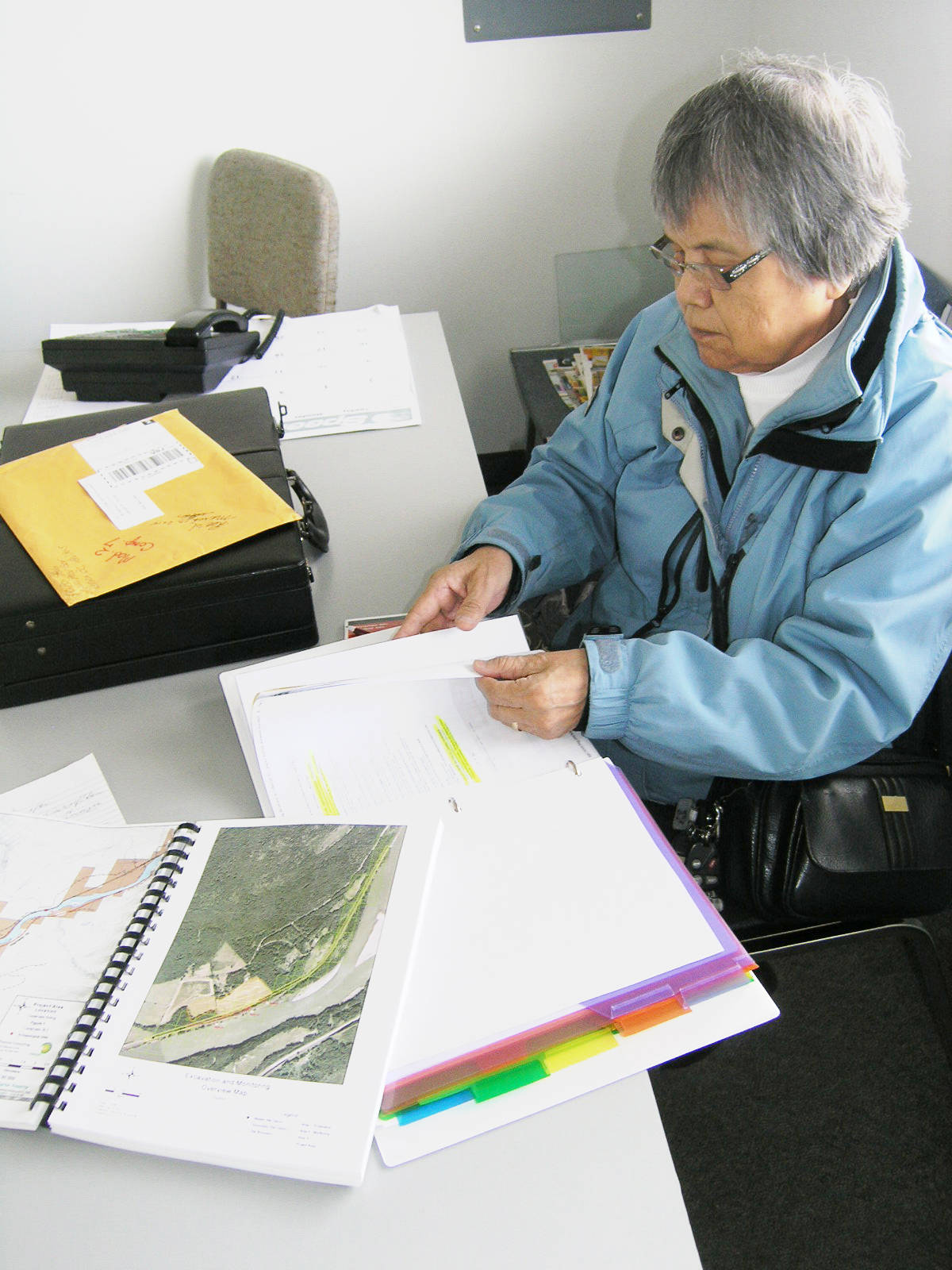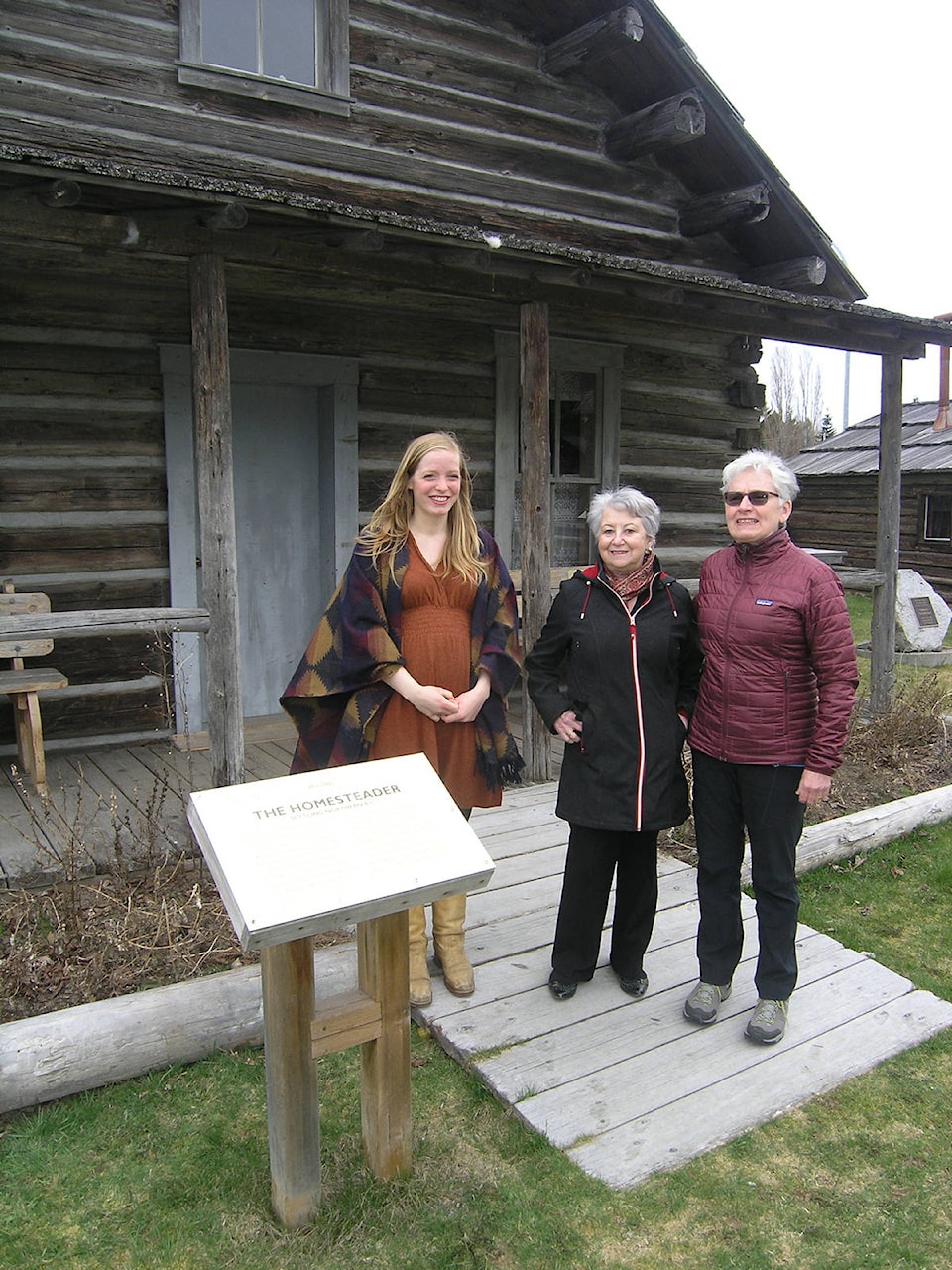LOCAL history is to be preserved and recognized thanks to just under $100,000 from a provincial and federal grant program highlighting the country’s 150th anniversary this year.
The five projects to receive Canada 150 money are among more than 220 across the province sharing $7.6 million in all.
Topping the local list with a $60,000 grant is Heritage Park Museum which has hired Northern Structural Moving of Smithers to replace the foundations on five of its log buildings.
Moved to the museum site in the early 1980s from their original locations, the buildings were placed on cedar posts which have since rotted, causing the structures to unevenly skew and to sink into the ground, explained Heritage Park curator Kelsey Wiebe.
“This has caused considerable strain on their log frames and has resulted in water damage to our artifact collections as well as to the buildings themselves,” she said.
Work is scheduled to start on three of the buildings this week with the remaining two to be done in the fall when Heritage Park’s busy summer season has ended.
Northern Structural will pour concrete pads under each building and then top each one with a one- to two-foot cedar post, said Wiebe.
“There’ll be air flow underneath and no moisture will be wicking up,” she said in outlining the scope of the work.
The concrete pads will be covered up with dirt so as to preserve how the buildings looked at their original locations, Wiebe noted.
When the five buildings are done, each building at Heritage Park will have had its foundations redone.
Wiebe expects the new foundations to last at least 50 years, adding that the cedar posts can be easily replaced when necessary.
Northern Structural Moving has done past work at Heritage Park and is very experienced in what it does, she said.
The company is also making a donation toward the project and Heritage Park will be using its annual capital grant from the City of Terrace and Regional District of Kitimat-Stikine.
“The grant has really helped us to do all of this work at once,” said Wiebe.
She was also pleased that five local projects are to receive Canada 150 grants.
“I know that applications for $24 million were submitted [across B.C.] so to have five of 220 grants approved, is very good for this area,” said Wiebe.
The five buildings to be worked on are:
The two-storey Conroy Cabin (1914) represents homesteading, domestic labour, and the complexity of First Nations-settler interactions;
The Fred Hampton Barn (1912) displays early twentieth-century agriculture and the often unsuccessful translation of settler’s European ideas onto a northern British Columbia landscape;
The Johnstone Cabin (1921) showcases both forestry history through its display and early tourism as a result of its original location at the Lakelse Hot Springs;
The Lineman’s Cabin (1919) tells the story of the telegraph line and early communications;
The Trapper’s Cabin (1930) displays trapping history.
Here’s a rundown of the other Canada 150 grants.
Meanskinisht
Better known today as Cedarvale, this tiny settlement east of Terrace on Hwy16 can trace its beginnings back to the start there in the late 1880s of an Anglican mission which took the name Meanskinisht meaning “under the pitch pines.”
Organized by Robert Tomlinson Sr. of the Anglican Church Missionary Society, the settlement gathered together Gitxsan families from the area.
An original log church built in 1891 was replaced in 1907 by one made of lumber from the community’s own sawmill.
It burned in the 1950s but through a land purchase made by Tomlinson, an adjacent cemetery remains in the Tomlinson family and has been declared a site of significance by the Regional District of Kitimat-Stikine.
Tomlinson, wife Alice and other family members are buried there as are Gitxsan people connected to the original settlement and area.
Using a $25,000 Canada 150 grant, supplemented with a contribution by itself, the regional district is going to build a 12 foot by 14 foot gazebo at the site to contain sign boards outlining the history of Meanskinisht.
“We’re even planning for the roof of the gazebo to be peaked in the style of the [1907] church,” said regional district planner Nicholas Redpath.
The project is being undertaken with the cooperation of Seattle resident Susan Tomlinson Durbin, a great-granddaughter of Tomlinson.
“This is something we’ve been hoping for for a long time,” said Tomlinson Durbin. “I hope we can use trees from the area for the structure and rocks from the Skeena River. That’s kind of the vision I have for it.”
One Cedarvale resident who will be specifically recognized as part of the gazebo project is Mary Dalen, a granddaughter of original Meanskinisht residents.
Dalen passed away last December and is buried at the cemetery, something permitted because her grandparents were original Meanskinisht residents.
Through the Meanskinisht Village Historical Association, Dalen and her family maintained the cemetery for years.
“One of those plaques will be for Mary,” said Tomlinson Durbin.
“They have tirelessly cared for the church yard and cemetery.”
Dalen’s son Lyle said the family was happy she would be remembered for her work over the years.
“And for the importance of our family history to the area,” he said.
Northwest Regional Airport
It’s a question a lot of people ask: what’s that large concrete structure on the lefthand side of the access road to the airport.
It dates back to the original construction of the airport as an airbase during the Second World War and now it’s going to be recognized thanks to the city receiving a $10,000 Canada 150 grant, supplemented with some of its own money.
“It’s a gunnery backstop. It was used to sight in guns on the aircraft,” said Ken Newman, a city planner.
The plan is to place at least three interpretive signs at the structure explaining the origins of the airport as well as highlights and significant events since then, he said.
A fourth interpretive sign is also in the works and will be placed in the area of the ballfield and small playground at Kerr and Haugland on the southside.
It’ll give more background concerning the Second World War in Terrace with reference to two Second World War fuel storage tanks structures that remain at the location.
Family histories
Using its $3,300 Canada 150 grant, the Terrace Regional Historical Society has been busy collecting family histories of those who arrived between 1940 and 1970.
They’ll be published in book form later this year.
Those decades are significant as they take in the Second World War and the large-scale development of the forest industry through first the creation of Tree Farm Licence No. 1 and then the start of Columbia Cellulose, a forests product company which once dominated the regional economy, said society representative Norma Kerby.
She said families also left Port Essington, on the southside of the Skeena River near its mouth, during this period to permanently live at Kitsumkalum.
More than 100 submissions were received along with photos, many of which Kerby described as “priceless.”
And for an added bonus, families were also asked to submit a favourite recipe.
“Having those recipes is like a historic snapshot,” said Kerby.
Including recipes helps explain the book’s title: “Cooking up History in Terrace, B.C.”
Rosswood
Rounding out the local list of five grants is one for $1,500 to the Rosswood Community Association.
It’ll be used on a sign explaining the history of the community and of Kalum Lake.
That sign will be erected at the Kalum Lake pullout alongside the Nisga’a Highway on the way up to Rosswood.
An installation date has yet to be set.


